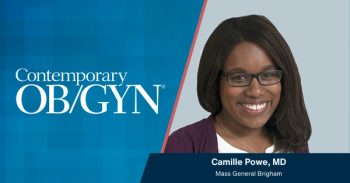
Patient reported aesthetic outcomes for breast cancer
In a recent study, patient-reported outcomes were more effective for measuring aesthetic outcomes than expert panels or computerized software in patients with breast cancer.
According to a recent study published in JAMA Network Open, tools for treating postoperative aesthetic outcomes (AOs) improve outcomes in patients with breast cancer (BC).
An increase in BC incidence has been observed, leading therapeutic advances to be developed for patient health. The aesthetic and function of BC treatment is most often quantified through patient-reported outcomes (PROs).
Methods have been developed for standard evaluation of AOs after BC therapy, including the Breast Cancer Treatment Outcome Scale, the BREAST-Q assessment, and the Hoeller scale. Perceived AO has recently been considered as a measure of BC health in the perception of health care professionals.
There is a wide variability of AO assessment models and nonstandardized literature on AO analysis. This leads to a lack of standardization in the field. Investigators conducted a network meta-analysis (NMA) to evaluate expert panels and computerized evaluation modalities against PRO measures (PROMs), the top method of assessing AO in patients.
Databases including Embase, PubMed, PsycINFO, MEDLINE, the Cochrane Central Register of Controlled Trials, the World Health Organization International Clinical Trials Registry Platform, and ClinicalTrials.gov were searched for articles on BC and AOs. Search terms included “breast conserving AND aesthetic outcome AND breast cancer.”
Articles from database inception to August 5, 2022, were included in the analysis. Studies were eligible if they had at least 1 pairwise comparison and included patients who received BC treatment with curative intention. Modality discordance from PROMs was the primary measure of the study.
Additional data gathered included patient characteristics, treatment approach, and interobserver AO variability. This data was collected for PRO variability assessment across studies and meta-regression analyses for pairwise comparisons.
Study extraction was performed by 2 independent researchers, with a third performing cross-check. AOs were then normalized into a 4-point Likert scale, with outcomes including excellent, very good, satisfactory, and bad. All data from PRO AO reporting tools were also grouped based on Likert scale, along with results from panel AO reporting tools.
Comparisons evaluated included Likert responses of excellent vs all other responses and Likert responses of excellent and very good vs satisfactory and bad. Quality assessment was performed using the Grading of Recommendations Assessment, Development and Evaluation tool.
Findings were discussed by an international panel of breast surgeons, selected based on relevance and expertise in their field. Along with discussing findings, the panel defined knowledge gaps and determined future research priorities.
There were 10 observational studies included in the final analysis, 8 of which were of good quality and 2 of fair quality. Most displayed high confidence in evidence, and different PROs and panel items were examined between studies.
Across all studies, there were 3083 patient AOs assessed. Patients were aged a median 59 years, and the median follow-up period was 39 months. AOs were self-reported by 2111 patients, while 1399 were assessed by an expert panel and 961 were assessed by BBCT.core.
Expert panel and computer software modalities were indicated to both undergrade AOs compared to PROMs in all Likert scale groups. The computerized AO tool also underrated AOs compared to expert panels, though results were nonsignificant. This indicated a high confidence rating for the NMA.
Low network incoherence was found for Likert groupings of excellent compared to other groupings. When comparing responses of excellent and very good to other responses, low network incoherence was also found.
When the panel discussed these findings, 60% of panelists felt existing AO scoring tools were complementary and individually irreplaceable. PROMs were believed to be the most valuable tool for measuring AOs, favored for assessing surgical technique, primary surgical treatment outcomes, and revision procedures.
Overall, AO scores by patients were higher than those by expert panels and computer software. Investigators recommended further studies to determine a multimodal method of AO scoring.
Reference
Kastora SL, Holmquist A, Valachis A, et al. Outcomes of different quality of life assessment modalities after breast cancer therapy: anetwork meta-analysis. JAMA Netw Open. 2023;6(6):e2316878. doi:10.1001/jamanetworkopen.2023.16878
Newsletter
Get the latest clinical updates, case studies, and expert commentary in obstetric and gynecologic care. Sign up now to stay informed.











